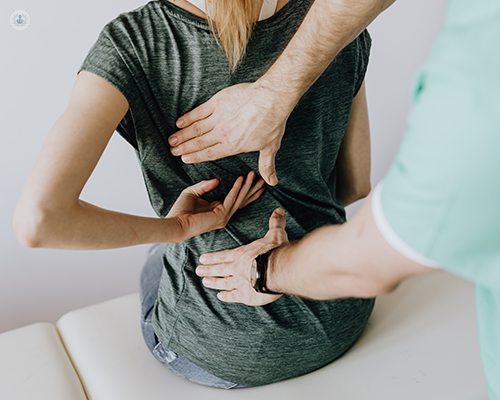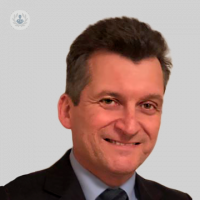What is spinal cord stimulation and can it fix my pain?
Autore:Spinal cord stimulation provides dramatic pain relief for some people with severe chronic issues. As a leading specialist in pain medicine, Dr Thomas Smith provides treatment for a wide variety of chronic pain conditions, including the procedure of spinal cord stimulation. Learn from an expert about this treatment.

What is spinal cord stimulation?
Spinal cord stimulation is a type of neuromodulation – a process that aims to alter nerve activity using electricity. In pain medicine, neuromodulation is used to decrease pain.
Spinal cord stimulation involves patterns of electrical charge being delivered to the spinal cord to reduce chronic pain. This electric charge is focused on the rear part of the spinal cord, also known as the “dorsal” part because the dorsal area is where pain pathways are. It’s also where the amplification of pain takes place.
Spinal cord stimulation calms the pain messaging from the lower body that is travelling upwards to the brain. Once spinal cord stimulation has taken place on a location of the dorsal area, only non-pain messaging continues up to the brain.
With the reduction in pain, patients can sleep better, become more active and come off pain medications.
Who can spinal cord stimulation help?
Spinal cord stimulation is used for moderate to severe chronic pain that has not responded effectively to other treatments. It’s a pain that is thought to have a strong neuropathic element (pain related to the nerves). Before undergoing this procedure, patients will usually consider and try:
- New lifestyle approaches
- Physiotherapy
- Pain medicines
- Injections
The procedure can be used for a variety of conditions, the most common being persisting back pain and leg pain after spinal surgery. It also helps to treat:
- Nerve pain after injury in surgery or other trauma in a limb or the trunk
- Nerve pain from damage caused by metabolic, infective and inflammatory causes. This includes diabetic neuropathy and postherpetic neuralgia (persisting pain after shingles)
- Complex Regional Pain Syndrome (CRPS)
- Severe headache conditions
- Limb pains due to lack of blood flow (vascular insufficiency)
- Persisting severe angina
- Some pelvic pains
- Some abdominal pains
What can it not treat?
It can’t relieve “mechanical” pain or pain from inflammation, meaning it cannot help with pain related to arthritis or the wear and tear of joints.
What is used in spinal cord stimulation?
During the process of spinal cord stimulation, the electric stimulation is released by metal electrodes and tiny metallic conducting wires inside thin and flexible wires made of plastic. There is also an implantable pulse generator (IPD) and this combines a batter (that is inside a metal and plastic case) and a mini-computer. Some systems may use an external battery rather than an implantable one. A remote control is used to direct the electric stimulation.
You can receive Dr Smith’s leading specialist help for a wide variety of chronic pain conditions. Learn more and arrange your first consultation.



